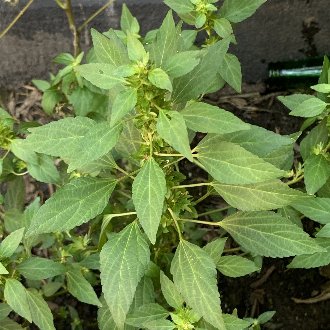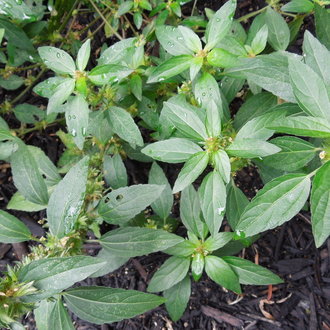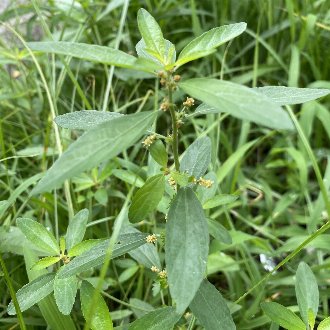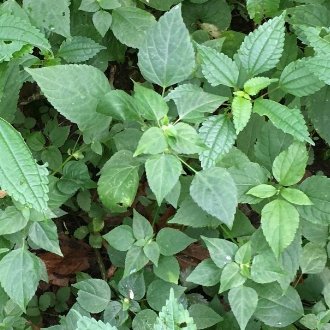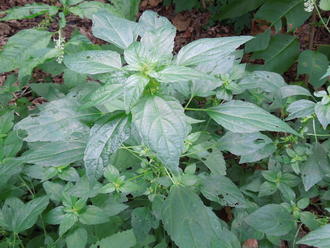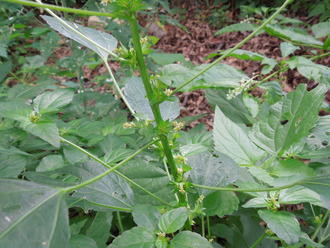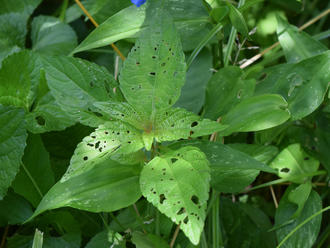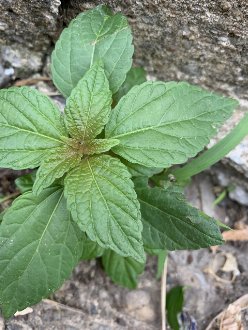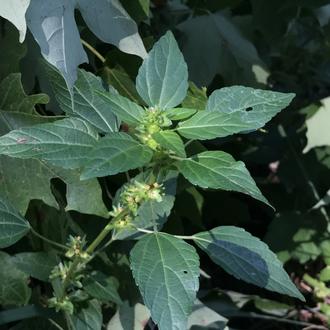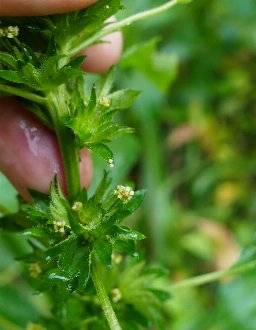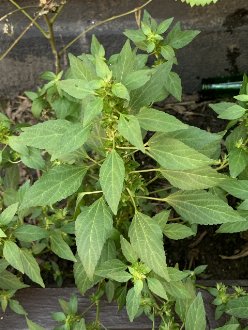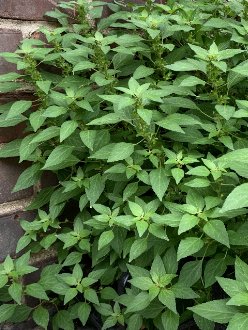Rhomboid Mercury (Acalypha rhomboidea Raf.)
Also known as common copperleaf, common threeseed mercury.
↑Summary
A common annual native to eastern to central North America, found in a range of habitats that have been disturbed in late spring to early summer.
↑Range - Expand
| Legend | Color |
| Native | |
| Native or Not Present | |
| Native or Introduced or Not Present |
This tentative map is based on our own research. It may have limited data on Canada and/or Mexico, and there is some subjectivity in our assignment of plants as introduced vs. expanded. Read more in this blog post.
Although this plant occurs somewhere in each of these regions, it may only occur in a small part of some or all of them.
This species is also native to eastern Canada; we have yet to build this portion of its map.
↑Similar Plants
↑Habitat
Found in a wide range of habitats on sites that have been disturbed after the initial emergence of vegetation in the spring. Wild habitats include disturbed sites (especially moist depressions) in grasslands, limestone barrens, and openings in bottomland forests, including sandbars, shores of lakes or streams, or seasonal wetlands that are submerged early in spring but become exposed in late spring to early summer. Often more abundant in anthropogenic habitats, including vacant lots, industrial areas, cropland, roadsides and railroad margins, parks, gardens.
Because of its later emergence, it usually cannot survive competition from other plants that sprout earlier. This species is heavily dependent on this timing of disturbance, but is more of a generalist with respect to other conditions.
Prefers fertile, loamy soil, but tolerates gravel or clay soil and low soil fertility, and even able to grow in small cracks in pavement or rock. Usually absent from sandy soils. Prefers moist conditions but tolerates mesic to slightly dry conditions. Prefers partial sun with several hours of direct sunlight, but tolerates from full sun to light shade from an open canopy. This species is more limited to shady habitats towards the south of its range.
This plant has benefitted greatly from human alteration of the environment; the mowing, trimming, tilling of garden soil, or clearing of plants once the growing season has already gives it an opportunity to take hold.
↑Life Cycle
A strict annual, new individuals sprout from seed each year. Plants do not emerge until the warmer temperatures of late spring or early summer, when other vegetation has already had an opportunity to emerge and grow considerably, but plants require direct sun and exposed soil to germinate. As such this plant establishes only on sites where competing vegetation was either sparse to begin with, or where some disturbance (typically in late spring to early summer) removed competing vegetation.
Plants start blooming mid-summer and usually continue blooming and producing seed incrementally until a frost, after which plants die down. Most seeds fall close to the parent plant, but they may also be distributed to a degree by animals and/or water. We could not find research on this species' seed dispersal mechanism.
Flowers are inconspicuous and probably wind-pollinated.
This species forms a persistent seed bank, and sometimes germinates from the soil on sites where it was not present in previous years, but we did not find research establishing exactly how long the seed can persist.
↑Faunal Associations
Little is known about the faunal relationships to this plant. Deer occasionally browse the foliage.
The relatively large seeds support the mourning dove, greater prairie chicken, and likely other large seed-eating birds.
The leaves usually show evidence of insect damage, although we have so far been unable to find information on which insects eat this species; it may be eaten by flea beetles, which have been recorded feeding on A. virginica. It is probably also eaten by several generalist moth species. The southern armyworm (Spodoptera eridania) may feed on this plant. The fall armyworm (Spodoptera frugiperda) has been recorded eating unspecified Acalypha species within this species range, and likely eats this species, but it is probably not a key host. The salt marsh moth (Estigmene acrea) has also been reported on this plant. The gall midge Resseliella globosa forms galls on this species, along with other Acalypha sp.
↑Uses
This plant is rarely used intentionally by humans for any purpose and is typically viewed generically as a "weed". Its seeds are difficult to collect, and transplanting it is effort-intensive relative to its short lifecycle. However, it serves an important function of quickly providing vegetation cover on sites disturbed during a specific time-frame, and it is good at supporting large seed-eating birds..
People doing ecological restoration work can allow this plant to provide its benefits the ecosystem by learning to recognize it and avoid killing it.
In gardens, especially on sites of lower soil fertility where this plant retains a shorter habit, this plant can sometimes be left in place to form a groundcover-like effect during the growing season, where it bears a slight resemblance to Pachysandra in the shape of its leaves.
↑Related Plants
There are numerous Acalypha species found in North America; most are native but there are a few introduced species in isolated areas. The most common overlapping species are Virginia threeseed mercury (Acalypha virginica), which is usually slightly less common in anthropogenic habitats, and slender threeseed mercury (Acalypha gracilens), which has a more southerly distribution and a greater preference for sandy soils.
The broader Euphorbiaceae family contains even more plants found in North America, but these plants share less in common with the Acalypha species ecologically, in part because the Acalypha species have lost the toxic sap characterizing most of the Euphorbiaceae family. Because of this, although these plants are closely related, the Acalypha sp. tend to be eaten by herbivores that ignore other members of this family.
↑Links & External Resources
• Acalypha rhomboidea (Rhomboid Mercury) | Illinois Wildflowers (About This Site)
• Acalypha rhomboidea (Rhomboid Mercury) | USDA PLANTS Database (About This Site)
• Acalypha rhomboidea | Go Botany (About This Site)
• Acalypha rhomboidea | Biota of North America Project (BONAP) (About This Site)
• Acalypha rhomboidea | NatureServe Explorer (About This Site)
• Acalypha rhomboidea | Flora of North America (About This Site)
• Acalypha rhomboidea | Missouri Plants (About This Site)
• Common Three-seeded Mercury | Maryland Biodiversity Project (About This Site)
• Acalypha rhomboidea (Three-seeded Mercury) | Minnesota Wildflowers (About This Site)
• Acalypha rhomboidea Raf. (Common Three-seeded Mercury, Common Copperleaf) | Digital Atlas of the Virginia Flora (About This Site)
• Acalypha rhomboidea Raf. | Plants of the World Online (POWO) (About This Site)



